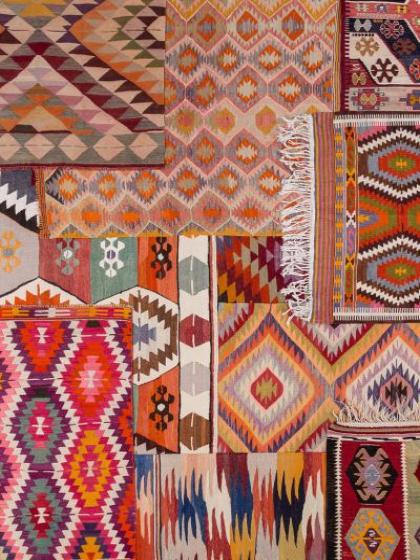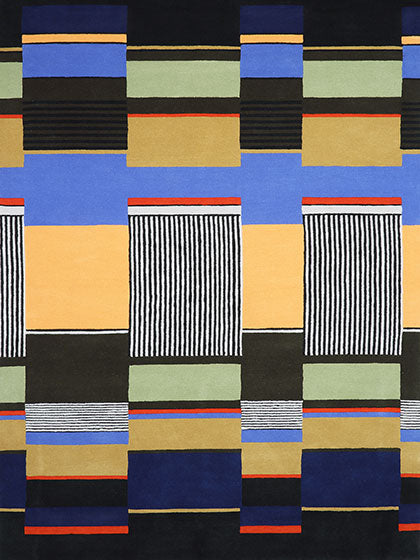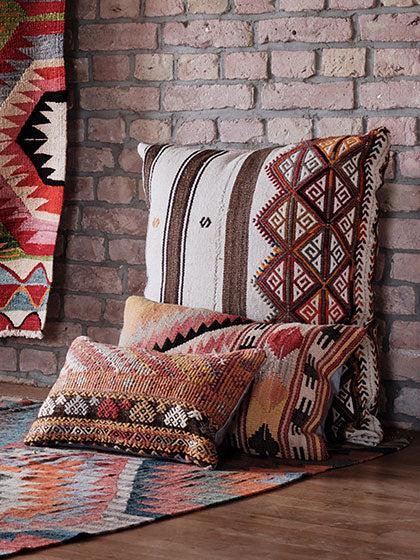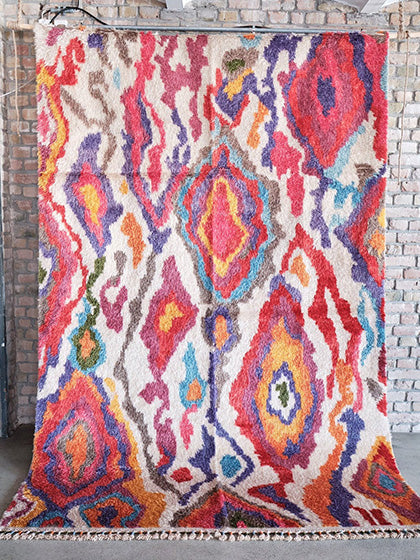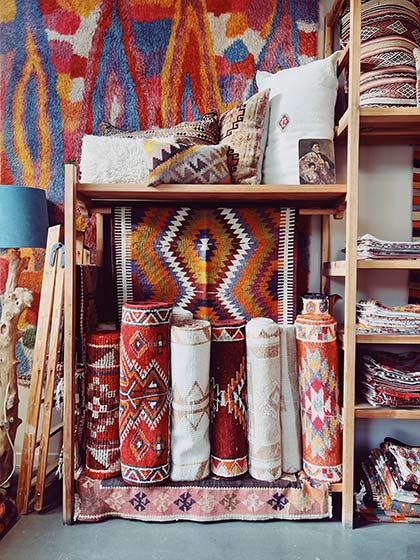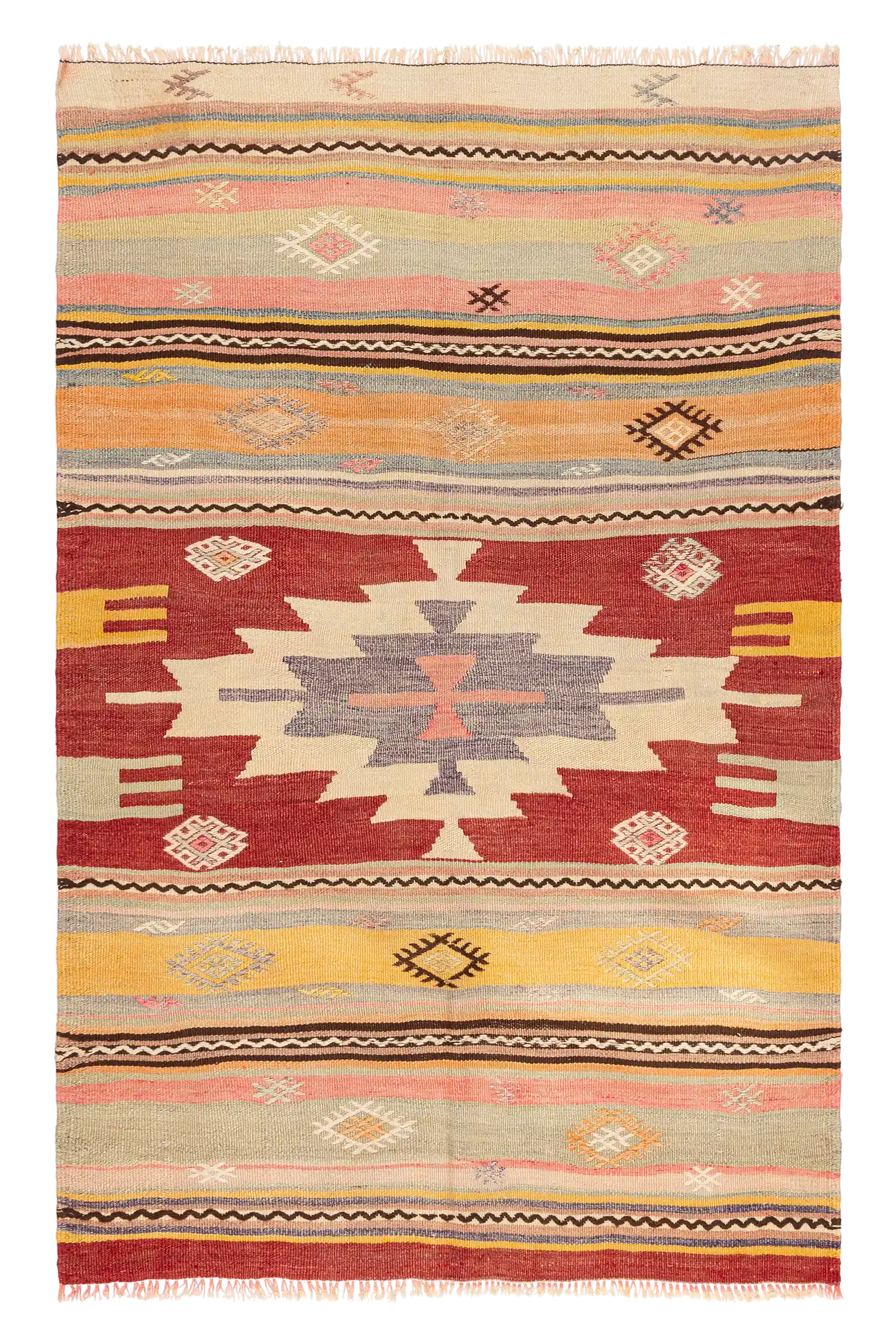
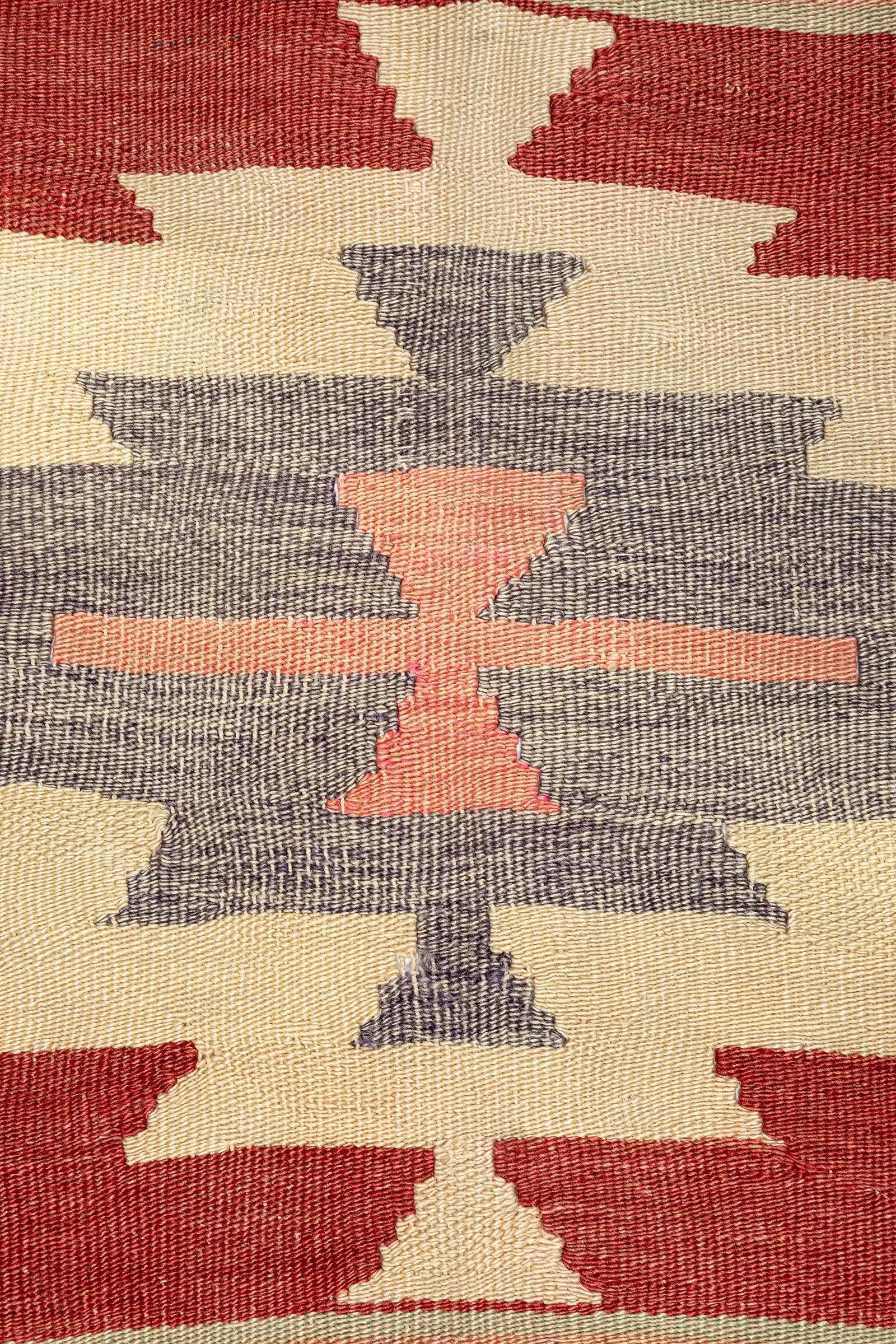
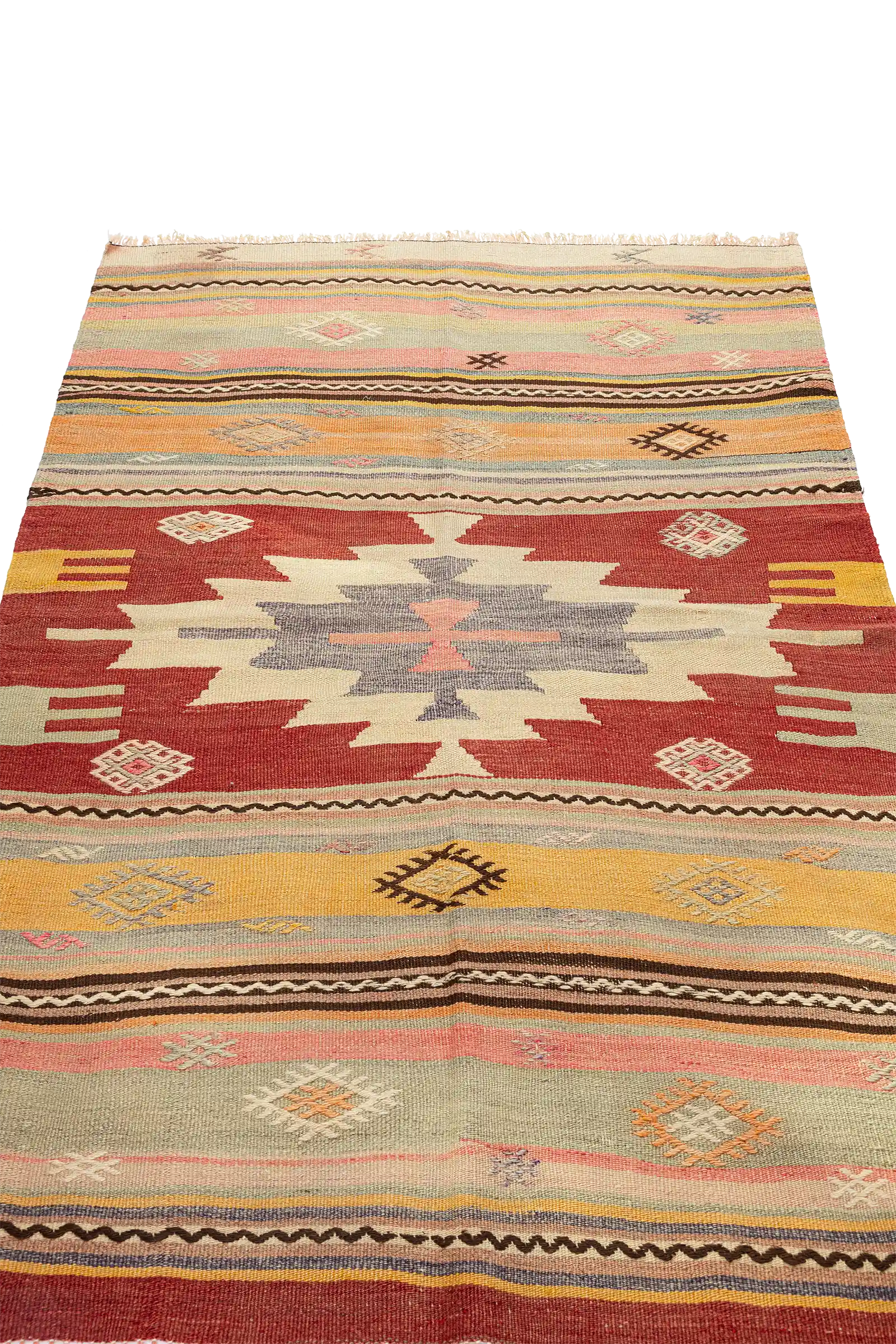
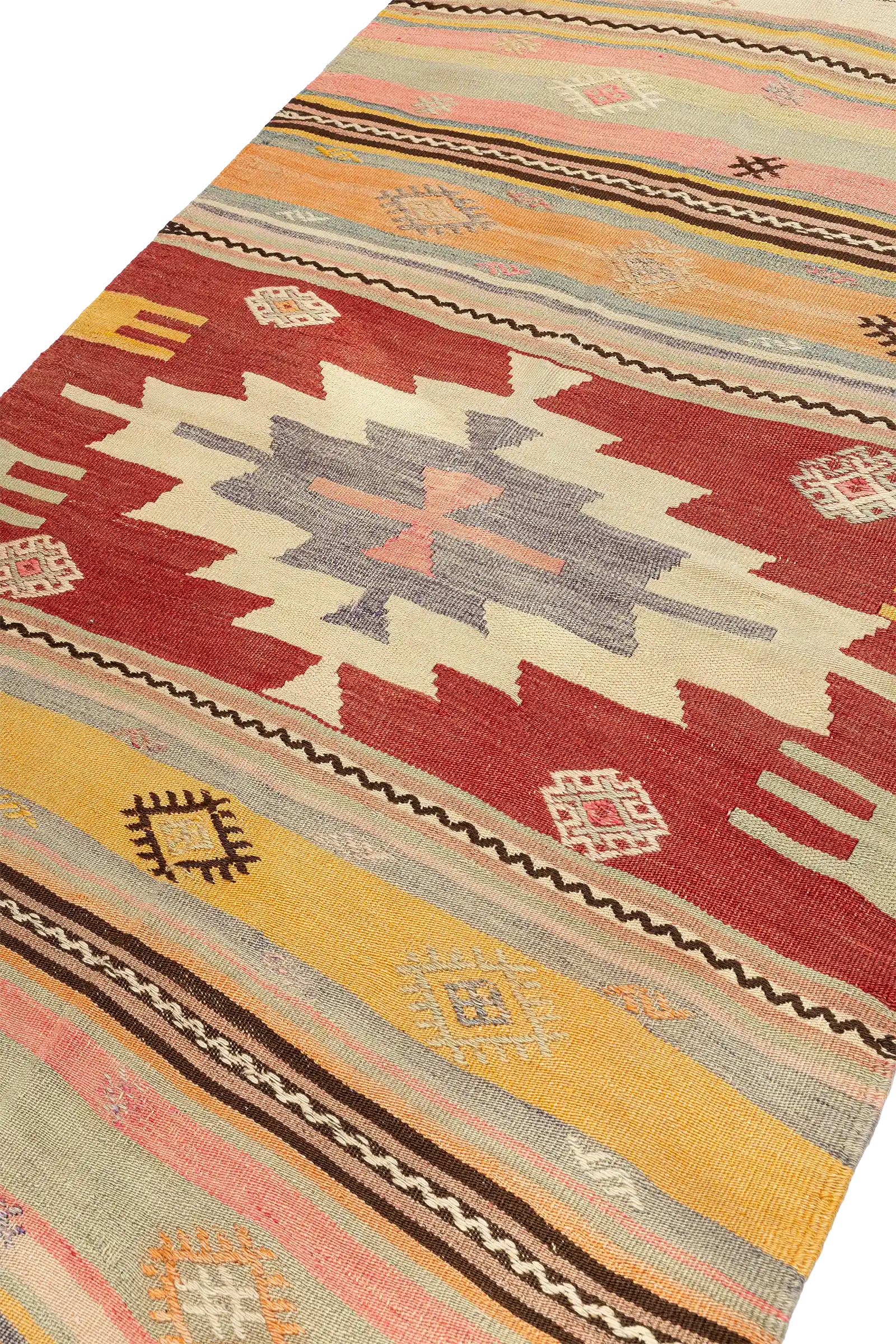
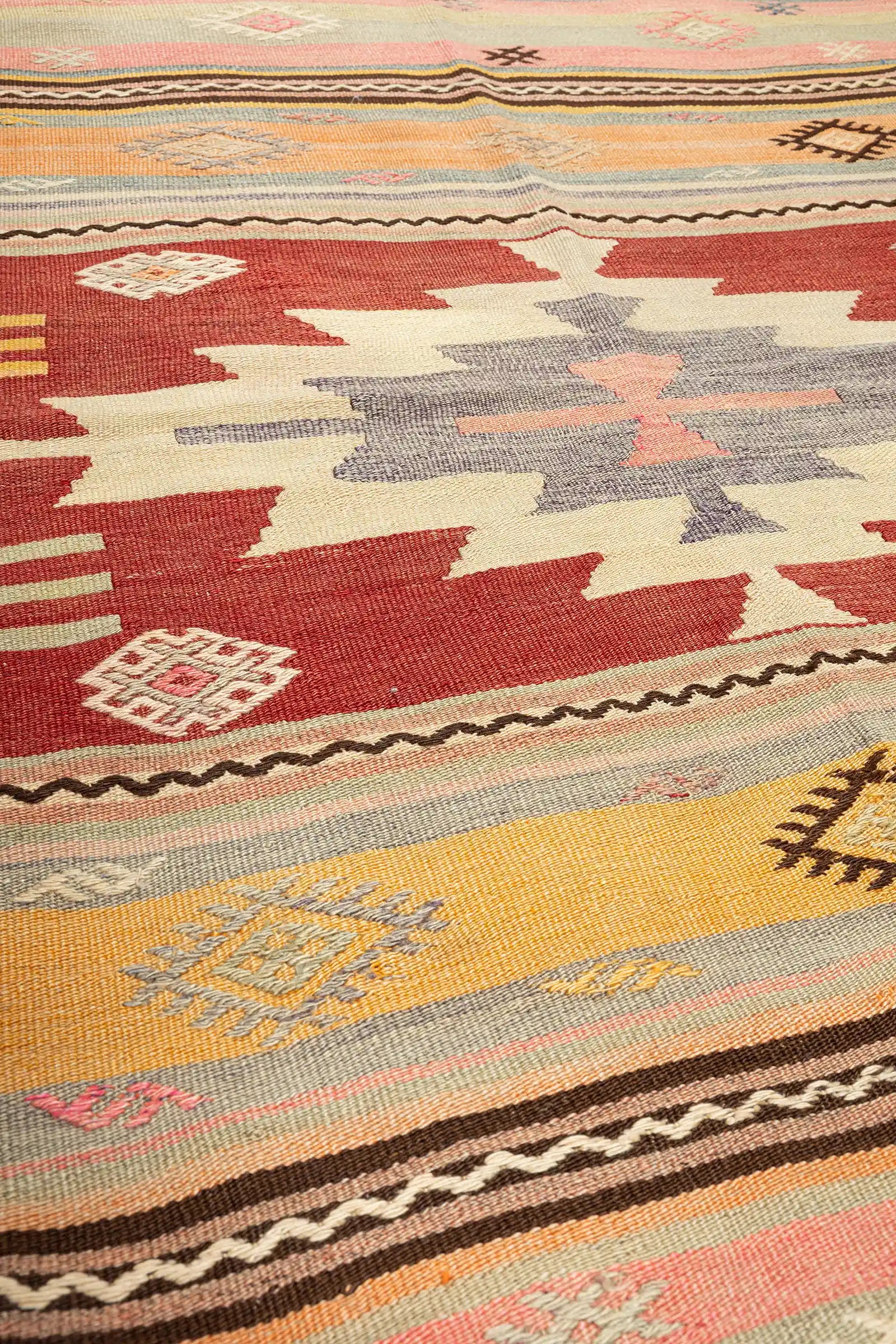
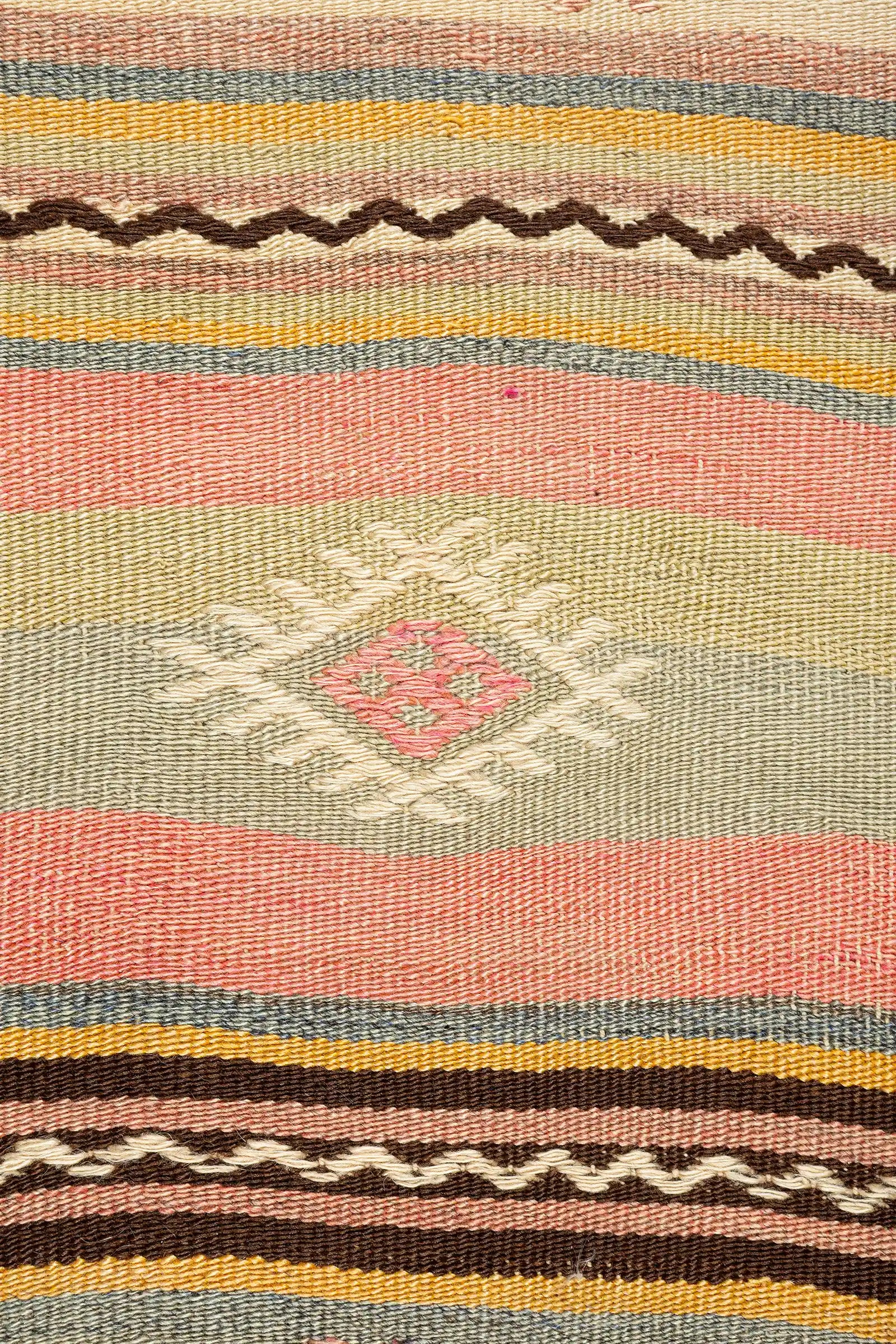
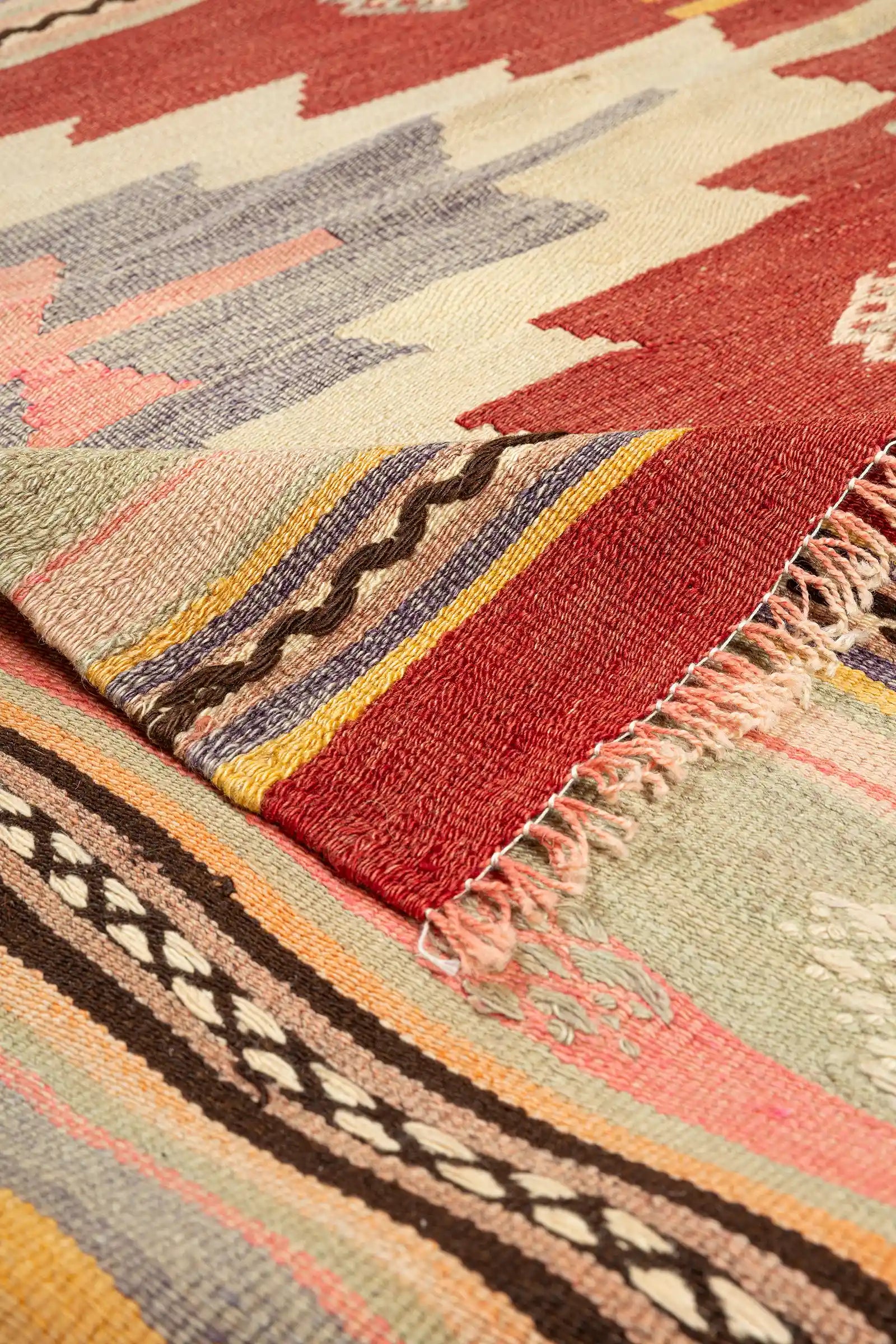
DENIZLI vintage kilim 150x95cm
DENIZLI vintage kilim 150x95cm
Wild Heart Free Soul
Kastanienallee 55
10119 Berlin
Germany
Symbolic power in vibrant stripes
This handwoven vintage kilim comes from the Denizli region in the 1960s and is made from 100% hand-spun sheep's wool . This compact, unique piece tells of protection, beauty and lived craftsmanship.
At the center is a large medallion with a jagged frame—like a sun sending its rays in all directions. It draws the eye inward and opens the space to greater depth and presence.
Kilim symbols and their interpretation
This carpet combines several archaic symbols:
- Küpe (earring): symbol of love, connection and harmonious relationships
- El (Hand): Symbol of creative power, presence and care
- Kirkit (weaving comb): expression of the weaving craft – reminds us of the invisible knowledge of women
- Pıtrak (Burdock): Symbol of protection and abundance – sticks everywhere and brings blessings
- Yıldız (Star): Light and orientation, happiness and inner compass
- Göz (Eye): Protects against the evil eye – stands for vigilance and clarity
A small kilim with great meaning – like a woven talisman for your room.
Colors with character
The primary colors alternate in rhythmic stripes between terracotta, mustard yellow, pistachio green, salmon pink, and blue-gray . A bright brick red stands out in the center, contrasted by light accents of ecru, lilac , and dark brown . The plant-dyed wool displays delicate abrasion gradients—vivid traces of time and light.
Compact format, big impact
Measuring 150×95 cm, this kilim is perfect for entryways, as a wall hanging, at the foot of the bed, or as a pop of color under a small table. It brings not only beauty but also symbolic depth to your everyday life.
Carefully restored & sun-cleaned
This kilim has been carefully restored and cleaned with natural olive soap and sunlight . Its history remains visible—and it is ready to enrich a new home.
A kilim from Wild Heart Free Soul is like a woven poem under your feet.
It brings memories, strength and a sense of home back into your life.
Choose options
- Vintage carpet unique - only one in stock!
- Material: 100% high-quality, hand-spun sheep's wool
- Processing: Flat-woven by hand on a traditional wooden loom
- Age: Vintage / Semi-antique. Approx. 1960s
- Condition: Vintage in mint quality due to complex cleaning and restoration process
- Origin: Denizli, Anatolia
- Dimensions: 150cm x 95cm , height : 3mm
Anatolian kilims are far more than textile objects—they are woven memories, personal messages, and expressions of living culture. [...] Each kilim is restored with time, care, and respect. [...]
A kilim from Wild Heart Free Soul is not a product.
He is an inheritance. A woven wish.
And perhaps a companion for your home of tomorrow.
A kilim is a long-lasting companion—if treated with love and cared for carefully, it can last for many generations to come. It doesn't require extensive care, but rather the right kind.
We recommend gently vacuuming or beating the kilim once or twice a month to remove dust and dirt. Please do not use a rotary vacuum cleaner for this purpose; ideally, use a brush attachment or a gentle handheld device. Too frequent, intensive vacuuming can wear out the fibers over time.
Every few months, it's worth turning the kilim over and vacuuming the back as well. Rotating the rug slightly once a year ensures even wear and maintains the balance of the weave.
For basic cleaning, we recommend a professional hand wash every 3 to 5 years – using a pH-neutral shampoo or olive soap, gently worked in by hand, and thoroughly rinsed. Please never dry or steam clean your kilim – this will damage the fibers. If you need assistance choosing a suitable cleaner, we'd be happy to advise you. We work with experienced oriental rug specialists and are happy to share our special rates.
And if an accident does occur: Immediately dab fresh stains with a clean, dry cloth. If necessary, gently dab with a little olive soap and a slightly damp cloth – without rubbing or soaking. For stubborn stains, please consult a specialist immediately. Liquids that spread along the fibers can become permanently trapped, especially in flat weaves.
Dried food residue can usually be carefully scraped or brushed off – ideally with a steady hand and without haste.

